 Rice Cultivation
Rice Cultivation
September 3rd, 2002 Photo Update
 Rice Cultivation
Rice Cultivation
September 3rd, 2002 Photo Update
I returned from Europe on August 28. By the 29th, I was enjoying the remarkable developments
in the garden. Kathy has tended the rice very well. As I mentioned in the July updates, the entire
area has received very little rain during the past 10 weeks. There has been no shortage of
sunshine and heat. So, Kathy has had to contend with two primary issues.
In our area, we've had a few sprinkles during the past 10 weeks. Ten minute showers that quickly evaporate and provide little moisture to the soil. So, the garden rice has been watered with a regular lawn sprinkler. The paddy rice was easier to manage. Kathy simply had to make sure that the water levels remained consistent.
Kathy has not seen any mosquito larvae in the paddies. We think that is due to the very dry
weather; keeping the adult mosquitoes from traveling far from the local ponds. Also, as noted in
2001, the paddies seem to have a natural "immunity" to mosquito larvae. If she had seen any
wriggling larvae, she would have drained the paddies and allowed them to stand for two days,
before refilling them. That is sufficient time to dry out the larvae and still keep the underlying
soil moist.
I received an e-mail, in July, concerning the use of paddies, mosquitoes, and the possibility of
spreading West Nile Virus. These days, that is a real concern. While the paddies appear to be
poor mosquito breeding grounds, I have seen larvae in paddies at least twice, in 2001. So, if you
use the paddy method in your garden, please do keep your eyes open and drain the water, when
necessary.
Rice does very well with artificial watering, but it is my experience that other plants do not. A plot
of garden soil that is wetter than the surrounding environment attracts plant eating insects;
Cabbage moths, for example.
Since the garden soil was kept moist, plenty of plants thrived in the soil. So, Kathy had to
remove competing plants from the rice rows, on several occasions. The paddy rice was easier to
maintain since the soil was usually immersed in water and few other plants could germinate and
establish roots.
I'm glad that I returned home when I did. This year, I planted two varieties of rice. As it turns out,
the variety that germinated more slowly, made heads sooner! In fact, I am very fortunate that the
warm weather persists in September; giving the second variety time to develop mature rice.
I will try to issue a final "2002 Harvest" web page. For now, I think the best way to illustrate the
beauty and fun of our 2002 experience is through the "Before and After" pictures, below:
Water:
Competing Plants:
Though the stems have tillered into as many as 12 stalks per plant, the most striking change has
been the development at the tops. Many of the plants now have graceful, nodding heads of
grain. This phase of rice growing makes it all worthwhile! Adding beauty to any garden.
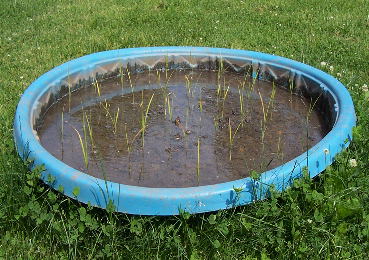
June 4, 2002 |
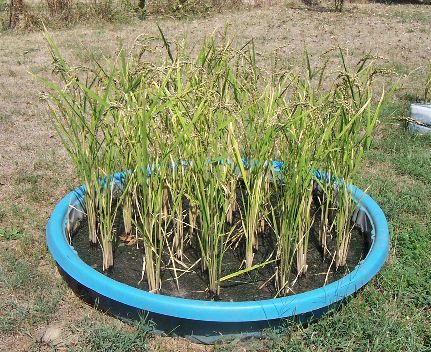
August 29, 2002 |
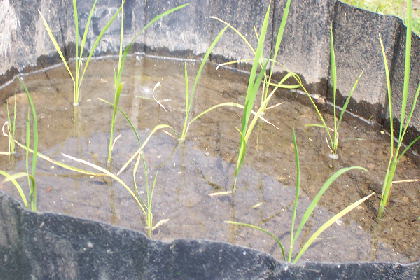
June 4, 2002 |
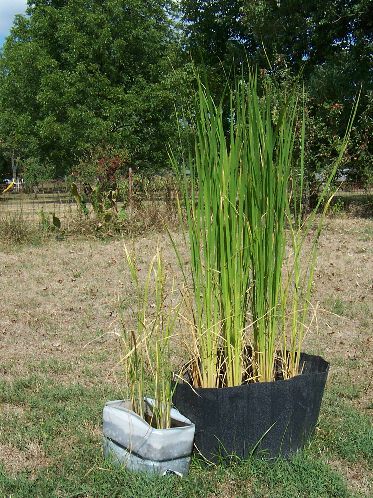
August 29, 2002 Notice, also, the "mini-mini" paddy from early spring (the small white container). It is producing viable heads! |
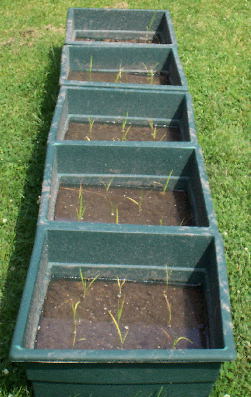
June 4, 2002 |
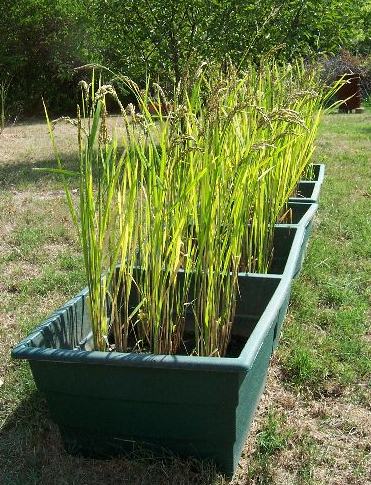
August 29, 2002 |

June 4, 2002 |

August 29, 2002 |

June 4, 2002 |
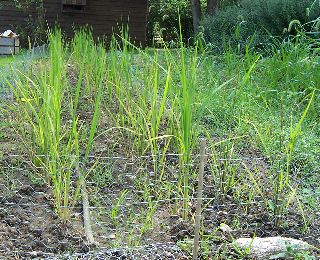
August 29, 2002 |
A closing thought. There are more developing seeds just in the picture, below, than I originally planted for the entire garden; paddy and direct planted, combined.
